#german legends
Explore tagged Tumblr posts
Text






















"ZU NEUEN TATEN, TEURER HELDE" Götterdämmerung - R. WAGNER Here some Siegfrieds and Brünnhildes.
Peter Cornelius as Siegfried; Copenhagen, 1905
Charles Dalmores as Siegfried; Brussels, 1902
Ejnar Forchhammer as Siegfried; ?, ?
Paul Franz as Siegfried; Paris, 1925
Hans Grahl as Siegfried; Hamburg, 1934
Alois Hadwiger as Siegfried; Coburg-Gotha, 1907
Ottfried Hagen as Siegfried; Munich, 1908
Ernst Kraus as Siegfried; Berlin, ca. 1907
Gorrhelf Pistor as Siegfried; Bayreuth, 1931
Julius Pölzer as Siegfried; Munich, 1932
Erik Schmedes as Siegfried; Vienna, ca. 1910
Josef Schöffel as Siegfried; Karlsruhe, ca. 1921
Hans Tänzler as Siegfried; Karlsruhe, 1910
Jacques Urlus as Siegfried; Berlin ?, ca. 1907
Fritz Vogelstrom as Siegfried; Mannheim, ca. 1909
Hermann Winkelmann as Siegfried; Vienna, 1880
Marie Brema as Brünnhilde; London, 1897
Louise Grandjean as Brünnhilde; Paris, 1908
Felia Litvinne as Brünnhilde with Grane; Brussels, 1902
Katharina Senger-Bettaque as Brünnhilde; Berlin, 1898
Fanni Wahrmann-Schöllinger as Brünnhilde with Grane; Hannover, 1920
Hedwig Reicher-Kindermann as Brünnhilde; Leipzig, ca. 1886
#classical music#opera#music history#composer#bel canto#classical composer#aria#classical studies#maestro#chest voice#Götterdämmerung#Richard Wagner#Twilight of the Gods#Musikdrama#Der Ring des Nibelungen#The Ring of the Nibelung#The Ring Cycle#The Ring#Bayreuth Festspielhaus#Bayreuth Festival#Old Norse#Ragnarök#Norse mythology#German legends#Nordic legends#classical musician#classical musicians#classical history#opera history#history of music
36 notes
·
View notes
Text

The Golem as a Classic Silent Movie
Actor and director Paul Wegener retold the story of the golem in the same period as Gustav Meyrick. He brought the legend to the silent screen three times in just five years: 1915, 1917, and 1920. In all three films, Wegener played the role of the golem himself, leaving a lasting mark on the visualization of the figure with his character's striking silhouette. Wegener achieved world renown for his final Golem film, made in 1920, The Golem: How He Came into the World. This classic silent film was a milestone in the horror genre.
#the golem#german legends#jewish tales#ghetto#sadness#racism#persecution#art as a way of speaking up#movies#germany#silent era#1920s#history
2 notes
·
View notes
Text
Fragments of fright (9)
From Richard Cavendish’s The Great Book of the Supernatural
THE MESSENGERS OF THE AFTERLIFE
Most people do not know when they will die - but a few of them are apparently warned of their imminent demise, thanks to the appearance of a ghost. This messenger of the afterlife can be a wraith, or a mysterious animal, and many families are proud of "owning" one.
The Hohenzollern dynasty, which reigned successively over the Brandeburg, Prussia and Germany (until the abdication of the kaiser Wilhelm II at the end of WWI) was boasting the existence of a "family ghost". This specter tied to their bloodline was a White Lady - a female ghost dressed in white, with a mourning armband, usually seen before the death of a member of the family, and appearing in the royal residences of Berlin or other Germany regions. It was believed that she might be the ghost of a princess of the 15th century, who was cruelly abused by her husband, who was a Hohenzollern. The dynasty of the Hesse of Darmstadt (Germany) also had its death herald - a Black Lady this time, in a mourning outfit, her face hidden by a dark veil. This ghost was supposed to be the archduchess Maria-Anna, wife of the archduke Ferdinand.
In the Danish royal family meanwhile, disasters were believed to be announced by the apparition at Gurre, south of Helsingor (a location that inspired the setting of Shakespeare's Hamlet), of the ghost of king Valdemar IV, who ruled on the Denmark in th 14th century and died at Gure in 1375. Another strange fact of the history of the Danish crown concerns the queen Astrid, killed in 1935 by a car accident. Some times after her death, she supposedly appeared before numerous people during a spiritism séance organized at Copenhague by the medium Einar Nielsen. A picture of her "manifestation" was apparently taken - but unfortunately, these kind of pictures are very easy to falsify and thus do not make an actual, solid proof of the ghost's apparition.
The Hasburgs, who ruled over the Austro-Hungarian Empire, were traditionally warned of any upcoming tragedy by the appearance of a group of great white birds circling in the sky. They were seen in 1889, soon before the double suicide of the heir-prince Rudolf and his mistress in Mayerling. Later, the emperor Franz-Josef the First also saw them in 1898, on the eve of the murder of his beloved Elisabeth. Finally, these sinister birds were spotted in 1914, before the Sarajevo attack which killed the archduke Franz-Ferdinand and caused World War I.
The most famous of these "messengers of death" is without a doubt the Irish banshee, which makes the pride and glory of the greatest and oldest families of the island. The banshees howls and wails with a melancholic voice through the night, crying the death of a family's member soon before it actually happens. She can appear as a beautiful maiden with a red shirt, or a green dress under a gray cloak ; or she can appear as an old hag. This "dual face", the beautiful maiden and the ugly hag, were the usual manifestations and appearances of the great goddesses of the pre-Christian Celtic religion, of which the banshee seems to be a remnant. It seems that getting rid of a banshee is hard, since there are records of them still wailing near the old domains of families that left Ireland a long time ago. A few years before the publication of this book, an American that was visiting the Aran island in the Galway bay, organized a party, with lot of music and dancing. As the night was ending, the young man returned home, playing accordion. The noise he made distressed the neighborhood, and someone had to go explain to a poor frightened old man that what he heard wasn't the screams of a banshee, but the sounds of a drunk playing very badly the accordion. Reassured, the old man knew three more weeks of peace... Until he heard the ACTUAL wails of the banshee, and soon after died.
According to a very old tradition, the death of the bishops of Salisbury is announced by the arrival of mysterious white birds flyig over the plain. Other bad omens - not necessarily meaning "death" - are the black dogs, or rather the black hounds, usually of an enormous size, that supposedly haunt the British countryside. Peel's castle, on the isle of Man, is the lair of one of those monsters, the Moddy Dhu, whose mere sight causes a person's death. You will also be doomed to die if you meet the Shriker dog, which hides in the Burnley cemetery (Lancashire). Many more sinisters black hounds are believe to wander on the paths leading to cemeteries. In a lot of popular beliefs and local folklore, dogs are associated with death, probably because in the distant past hungry dogs used to dig up corpses to eat them. There could also be something related to the strong belief that dogs are able to sense entities invisible to humans. Ghosts of dogs are particularly dreaded in the East-Anglia, where strikes the formidable Black Shuck, whose only eye shines in the darkness.
During World War II, an American air-pilot and his wife lived in Walberswick, in the Suffolk, and they had there a terrifying experience. During one whole night, an enormous black dog tried to enter in their house, and they only prevented it from doing so by piling up furniture in front of the door, that the animal nearly split open. At dawn, the beast left, but without leaving any prints in the mud surrounding the house. This event happened during a storm night - which reminds one of the old beliefs claiming that storms are caused by the mad run in the countryside of a pack of infernal hounds, whose howls causes death, madness and misfortune. In some regions, these hounds are led by the "Wild Hunter". In Denmark, it is king Valdemar that leads the pack, in Normandy the Devil himself ; in northern England it is "Gabriel's hounds" led by the Angel of Death, while in the Dartmoor the dogs follow sir Francis Drake riding a hearse. All these legends inspired without a doubt Conan Doyle when he wrote one of Sherlock Holmes' most famous adventures - The Hound of the Baskervilles.
#fragments of fright#supernatural#irish folklore#banshee#black hound#british folklore#white ladies#ghosts#danish legends#german legends
5 notes
·
View notes
Text

Brünnhilde the Valkyrie by Arthur Rackham
#arthur rackham#brünnhilde#valkyrie#valkyries#art#the rhinegold and the valkyrie#richard wagner#wagnerian#norse mythology#germanic mythology#brunhild#brynhildr#germanic#germanic heroic legend#shieldmaiden#der ring des nibelungen#europe#european#northern europe#nordic#völsunga saga#nibelungenlied#the ring of the nibelung#amazon#amazons#brunhilda#scandinavia#scandinavian#norse#spear
5K notes
·
View notes
Text

The Rhinemaidens by Gaston Bussière (1906)
#gaston bussière#art#paintings#fine art#1900s#1900s art#symbolism#symbolist art#symbolist#painting#french art#french artist#richard wagner#mythology#norse mythology#germanic legends#siegfried#sigurd#rhinemaidens#classic art
4K notes
·
View notes
Text

The legend of the Freischütz is a German folk tale that centers on a marksman who makes a pact with the devil to ensure his bullets never miss. He receives seven of them, with six hitting any desired target and the seventh controlled by the devil himself.
#this german legend my favorite#got too carried away drawing ornaments as usual...#golden kamuy#ogata hyakunosuke#gk ogata#ogata#my art
584 notes
·
View notes
Text


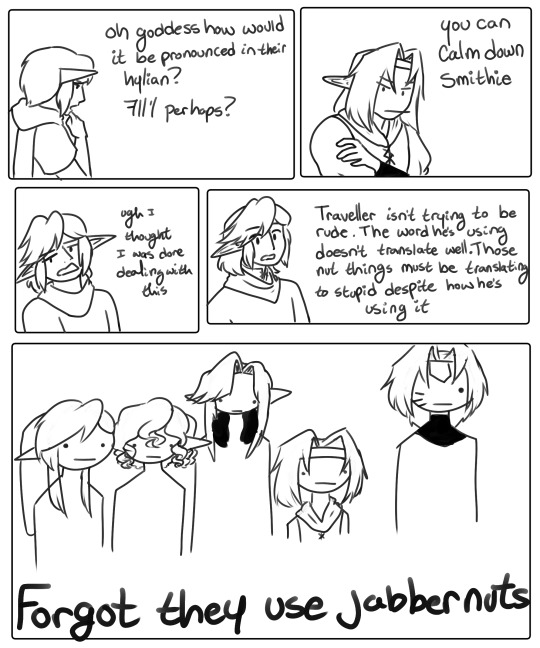
the mention of their different dialects and languages immediately had my enraptured
so here's a very quickly drawn comic based on I cannot seem to find a good german equivalent to silly
#linked universe#linkeduniverse#lu hyrule#lu wind#lu four#lu legend#lu time#lu twilight#lu warriors#my art#hii german speakers are there any good translations#unfortunately I am scared of internet strangers and if anyone else in my family still speaks german at all I don't talk to them#from a quick search in japanese it seems the first suggestions are also things like stupid and dumb so like#there's the guys who's hylian can be translated directly into english#and the ones where their hylian is based on japanese instead#which i think leaves a giant gap where there are just going to be things that don't translate well
1K notes
·
View notes
Text

just a normal day on german twitter with this tweet by El Hotzo
Harry Potter:
arrogant celeb
goes to a posh school in a castle in England
did not learn something proper
needed 7 books to kill the villain
Krabat:
normal dude
works at a mill in Lusatia
based apprenticeship as a miller
1 book, quick work with the villain
#el hotzo mention and a post does numbers#even tumblr is not immune to the el hotzo rizz#krabat#krabat and the legend of the satanic mill#ottfried preußler#german literature#sorbian#folklore#sorbian literature#jurij brezan#harry potter
1K notes
·
View notes
Text
Viktor x Reader Personal Pigments (Part 13)- Pyrrol Red
This is a jayvik x reader fic now but it'll still be labeled as a Vik Fic until it's fully implemented. Ft. a teasing Jayce. Can't have a slowburn without fuel. Find my imagine that inspired it here. Previous and next chapter will be linked at the bottom. Thank you for reading <3
╔═*✧ ✦ ✧.·:·.*.·:·.✧ ✦ ✧.·:·.*.·:·.✧-✦-✧.·:·.*.·:·.✧ ✦ ✧.·:·.*.·:·.✧ ✦ ✧*═╗
They had both missed you. Both admitted to it, teased the other about it. The information was interesting. It sparked familiar feelings. Doubt. Confusion. And less familiar ones too. Fuzzy warmth. Safety. When was the last time someone had done that? Missed you?
You were thinking about a lot of things as you worked today. During that talk with Mel you had only just started the underpainting, and still now you were barely halfway done with it. Well, you were before you had started it over for the third time. Despite all your studyings, having filled pages and pages of the two of them, you hadn’t really done enough studies of the lab. You knew how you wanted them pictured. Ideas for it anyway. You knew what personal elements to include that would represent each of them. You knew that Jayce stood with his weight on the balls of his feet, for his ever straight posture. And that Viktor stood forward on his toes. Leaning to the left off his right leg on good days, bracing himself against his cane on bad days.
Yet the background irked you. It could be the lab, but where? Against the window, illuminated by the golden sun to accentuate the yellow in Viktor’s eyes and the tan of Jayce’s skin? Or by moonlight, to make Jayce’s hair melt into the background and illuminated by the soft blue glow of Hextech. It would make Viktor’s pale complexion look ethereal if you did it right. Both were good ideas, ones you had already sketched. Ones that didn’t sit quite right with you. It could be outside the lab too, but that felt wrong. For one, you hadn’t seen either of them outside of the lab other than passing in hallways or that one day where they had visited the studio.
Your thoughts wander at the half thought. To soothing circles rubbed into your shoulder. To smooth dry hands holding yours. The two of them had been kind to you, gentle with you. Allowed you into their space, their life, their… friendship? Partnership? Their not, not togetherness. You didn’t consider yourself a part of that. You were a viewer. Since that conversation they whispered their rare flirtations less. Instead, letting the words be loud enough that you could hear. The actions had been loud enough for you to notice in the first place. It was a soft comfort in your chest at the feeling. They cared enough, trusted enough, to include you in that. You cast them a sidelong glance.
They were going over something together. Jayce had his arm braced against the back of Viktor’s chair, leaning over him in a closeness that could be read as necessary. It wasn’t. You all knew that. A knowing made clearer by Viktor’s hand unconsciously toying with Jayce’s fingers dangling off the corner. The sun had shifted onto their backs, the yellowing light catching on both of their heads. It was almost domestic, the relaxed nature of both their bodies, words carrying over to you that you didn’t quite understand. You didn’t need to. If you asked, they would explain it to you in a heartbeat.
After your conversation with Viktor things had gone back to normal. The three of you working in the lab in tandem. If Viktor had told Jayce what happened, the latter hadn’t acted like it. His smile just as bright, his energy just as high when things went well, his comfort the same when things went wrong. Viktor, however, had changed slightly. You had caught him on a few occasions looking at you. More than just the curious glances he offered your first week there. You weren’t sure what was behind those golden eyes, and each time you had met his gaze he didn’t let anything slip. The occasional smile, but sometimes not even that. Unreadable.
It bothered you, not enough to stop looking, but it bothered you. It did not upset you. You liked it. It was confusing. It was confusing because you liked it. You were staring at their hands now, the way their fingers interlocked and let go. Pearls and gold. Someone coughs and it pulls your attention up. Whenever Jayce caught you looking at Viktor, or the two of them, he seemed as if he liked it too. Like now. His eyes glittering with a knowing mischief. The problem was you did not know what it seemed like he knew. You wave your brush in the air. As if to say ���Just looking for art purposes, apologies.” It’s when he cocks a brow and stands, whispering “One sec Vik.” that you try not to panic. Viktor just squeezes his hand, waving him off with the other. You didn’t have hands on the canvas. You barely had anything past illegible wiped out lines that would only make sense to you.
When he gets over to your station he leans forward against the table. Large hands splayed on the colorful surface. "How's it coming Y/N?" His hazel eyes are on your lap, where you're fidgeting with your brush. It was clean, dry. No paint on it. No new paint on your canvas either. You decide to be honest to avoid whatever this interaction was about to be.
"Not well." He blinks at that. Brief concern before a different glint takes his eye.
"Having trouble focusing?" It's innocent. Playful. And it means nothing, you're sure of it. You try to ignore the blood rushing towards your cheeks. Your sketchbook was open on the table next to you. The pages were covered in notes and swathes of color. The flowers from your day outside sketched in the corners. Little doodles of gears in the margins. You grab it, thumbing through to a spread that had thumbnails of them in different poses.
"I'm not sure how I want you both." Jayce has picked up on something, eyes widening. You aren't sure what so you keep speaking "To be posed. Or where to put you in space. The lab seems most appropriate but?" You tap at the pages of your sketchbook again. "Some mockups."
"Gods did she not hear how that sounded?" Jayce likes to think that you do but he's seen how clueless both you and Viktor have been about your chemistry and it makes him want to laugh every time. And he would if it would get the three of you anywhere. He knows very well that Viktor could handle teasing, and could dish it out himself. You? He didn't know you as well just yet. Hadn't fully stepped into that territory. At least the blush was cute. He takes the book off the table. It was heavier than he thought.
The pages you pointed to had several small figure sketches of what he assumed were them in various places and poses. Each aspect in a different color. Some yellow, some blue. Some with spots that were erased over and over again, the paper pilling and buckling. He thinks back to that note you had left on the door. The words you had scribbled over. Did you even realize what Viktor had called you that night in your studio? Did Viktor? His thumb brushes over a more detailed drawing. He can see the lines of his fingerprint left on the paper, graphite dust darkening the page just a hair. It was of him and Viktor, the gear set between them. A cup of tea? Some flowers he couldn’t identify by the scale of the drawing but you had drawn out words and arrows explaining their meaning, color choices you wanted to do. Day and night in the same drawing, lighting them differently. You had redrawn this one the most, several smaller iterations of it spread across the bottom with different blurbs of color and text.
“Jayce? Any opinions?” He looks down at you past the book. Your leg was bouncing impatiently. Nervously.
“Still looking. You have a lot of stuff here.” He goes to turn the pages at that, to see what else is weighing the pages down. But you stop him, shooting up from your seat.
“No turning!” He’s shocked at your outburst initially. And then some teasing feeling pulls at the back of his neck, he wants to play. Like a dog being told to come back inside after running around and evading capture.
“And why not? What other ideas do you have hidden in here?” You’re not taking the bait just yet. Still stood at your chair, eyes wide. Flustered.
“Some things are meant to be private.” You put a hand out, fingers reaching towards him. He almost lets you grab it. Almost. Jayce pulls it back. He’s inclining his head towards you now. A grin plastered across his face. He wouldn’t actually sift through it if you didn’t want him to. And he can tell that you know that when you see his smile. Your shoulders relax when you start walking out from behind your table.
“Something juicy in here then. Viktor, do you want to see?”
“Nothing juicy, just private!” You laugh this time when you swipe for it and he moves it out of reach again.
“Did you know that Jayce signs all of his notes? Every single page.” Viktor is watching the two of you jump around like children with a content look on his face. He’d been looking since Jayce had asked if you were distracted. Seen you blush. Seen you offer him your sketchbook.
“Viktor!” Jayce looks at him, embarrassment making him freeze. That’s when you can snatch your prize away from him. “Hey! You two are no fun.” He gives a soft-chuckle before saying, “I guess I lost this time.”
“I am fun. And we are supposed to be working.” Viktor is giving him a pointed look while holding his own book of ramblings up. “Play another time.” Movement catches his eye, it’s you walking towards him.
“Thank you. Maybe you can help me pick a layout since someone can’t keep their hands to themselves.” Jayce laughs again, quick and joking apologies as he trails behind you. You show Viktor the spread that Jayce had been looking at. He gives it a onceover. He doesn’t know a lot about art and does not pretend to. He appreciates this glimpse into your process however. Something does catch his eye, a dark thumbprint pulled from a drawing. Larger than yours. Jayce’s.
“Eh. You will figure it out. Maybe it is there already. Maybe it is not. But I do like this one.” He taps his own pencil to the drawing.
“Hmm.” You’re pouting. Like you did not know if you liked his answer or not. His eyes are drawn to how full they looked when you purse them that way. Then to Jayce, who is watching him watch you.
“Anything else in there you want to share? We’d be better help if we saw more options.” Jayce’s hands slowly sneaking over your shoulder.
“Nice try.” You’re heading back to your seat. Jayce takes his usual post behind Viktor, quiet laughter still shaking his shoulders.
“You are incorrigible. Let us all work in peace, please.” You don’t answer him verbally, but he hears you flip through your sketchbook and start scribbling. Jayce, however, leans down to his ear. Breath tickling the shell when he whispers something you can’t hear. Words warmed by that last of his laughter.
“Not sure how she wants us both?” It gets him a slap on his shoulder before Viktor taps the book on the table.
“Work in peace Jayce.” The words leave him in a hissed whisper of their own.
╚═*✧ ✦ ✧.·:·.*.·:·.✧ ✦ ✧.·:·.*.·:·.✧-✦-✧.·:·.*.·:·.✧ ✦ ✧.·:·.*.·:·.✧ ✦ ✧*═╝
-------------.·͙*̩̩͙˚̩̥̩̥*̩̩̥͙ ✩ *̩̩̥͙˚̩̥̩̥*̩̩͙‧͙-Part 12-.-Part 14.·͙*̩̩͙˚̩̥̩̥*̩̩̥͙ ✩ *̩̩̥͙˚̩̥̩̥*̩̩͙‧͙ .---------------
------------‧̍̊·̊‧̥°̩̥˚̩̩̥͙°̩̥‧̥·̊‧̍̊ ♡ °̩̥˚̩̩̥͙°̩̥ ·͙*̩̩͙˚̩̥̩̥*̩̩̥͙· Master Fic List *̩̩̥͙˚̩̥̩̥*̩̩͙‧͙ °̩̥˚̩̩̥͙°̩̥ ♡ ‧̍̊·̊‧̥°̩̥˚̩̩̥͙°̩̥‧̥·̊‧̍̊--------------
#jayce talis is a german shepherd that thinks it's a puppy and a lap dog#fanfic#arcane#fanfiction#viktor arcane#x reader#viktor league of legends#viktor lol#jayvik#jayvikmel#jayce talis#mel medarda
77 notes
·
View notes
Text
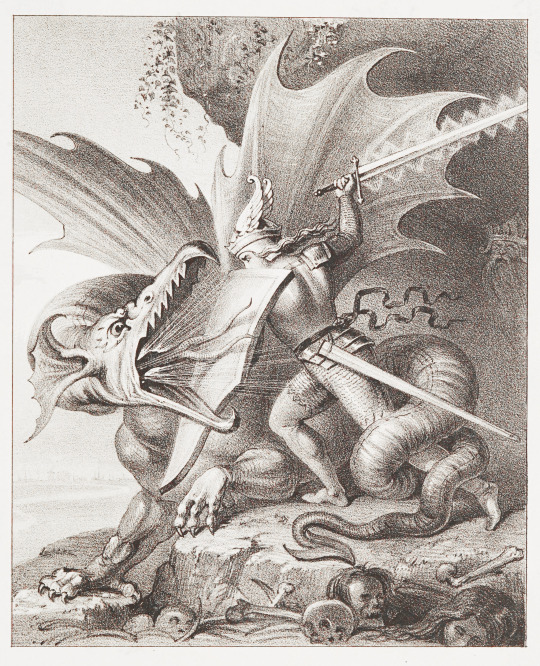
Wilhelm von Kaulbach (1805-1874), ''The Heroic Life and Exploits of Siegfried, the Dragon Slayer: An Old German Story'' by Guido Görres, 1848 Source
#Wilhelm von Kaulbach#german artists#german painters#siegfried#Germanic legend#dragons#dragon slayers#vintage illustration#vintage art#sigurd
198 notes
·
View notes
Text



















"NUN ZÄUME DEIN ROSS, REISIGE MAID!" DIE WALKÜRE - R. WAGNER (2 act)
Here some Brünnhildes
Mathilde Fraenkel-Claus as Brünnhilde; ?, (ca. 1902)
Marie Burk-Berger as Brünnhilde; Munich, 1907
Lucienne Breval as Brünnhilde (print); Paris, 1892
Berta Morena as Brünnhilde; Munich, 1907
Emmy Hoy as Brünnhilde; Kiel, 1912
Maria Maier as Brünnhilde; Mainz, ?
Maria Gembarzewska / Maryla von Falken as Brünnhilde; Munich, 1913
Helena Forti as Brünnhilde; Dresden, 1913
Loni Meinert as Brünnhilde; Mannheim, 1914
Gabriele Englerth as Brünnhilde; Wiesbaden, ca. 1915
Theo Drill-Oridge as Brünnhilde; Hamburg, ca. 1923
Helene Wildbrunn as Brünnhilde; Vienna, ca. 1923
Elsa Alsen as Brünnhilde; New York, 1926
Eugenie Burkhardt as Brünnhilde; Dresden, 1926
Nanny Larsén-Todsen as Brünnhilde; Bayreuth, 1927
Olga Haselbeck as Brünnhilde; Budapest, (ca. 1930)
Henriette Gottlieb as Brünnhilde; Berlin, 1930
Frida Leider as Brünnhilde; Berlin, ca. 1934
#classical music#opera#music history#bel canto#composer#classical composer#aria#classical studies#maestro#chest voice#Die Walküre#The Valkyrie#Musikdrama#Richard Wagner#Der Ring des Nibelungen#The Ring of the Nibelung#Norse mythology#Völsunga saga#Poetic Edda#German legends#Nordic legends#the Ring cycle#classical musician#classical musicians#classical history#opera history#history of music#historian of music#musician#musicians
19 notes
·
View notes
Text






Böse Hexen gibt es nicht!
BIBI BLOCKSBERG (2002) dir. Hermine Huntgeburth
#most niche gifset of all time#*#bibi blocksberg#film#filmedit#moviegifs#witchesnet#worldcinemaedit#german tag#ich habe diesen film seit gut 20 jahren nicht mehr gesehen aber einige dieser szenen haben in mir etwas ausgelöst#das nicht in worte gefasst werden kann#allein dieser kristallball. instant flashback#und corinna harfouch die legende#früher wollte ich immer so wie rabia von katzenstein leben#life altering experience
129 notes
·
View notes
Text
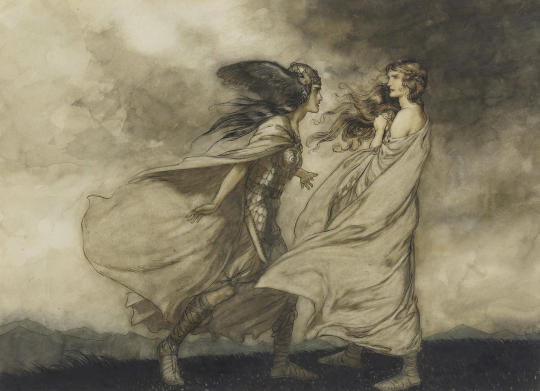
"The ring upon thy hand - ...ah, be implored! For Wotan fling it away!" Brünnhilde is visited by her Valkyrie sister Waltraute by Arthur Rackham
#arthur rackham#art#brünnhilde#valkyrie#valkyires#waltraute#siegfried and the twilight of the gods#richard wagner#the ring of the nibelung#der ring des nibelungen#germanic heroic legend#norse mythology#germanic mythology#the ring#ring#opera#europe#european#wagnerian#völsunga saga#nibelungenlied
544 notes
·
View notes
Text
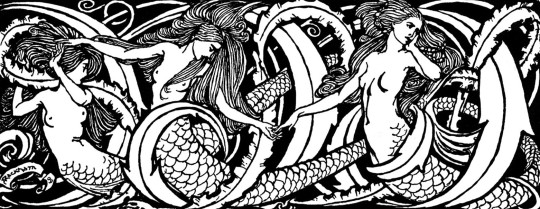
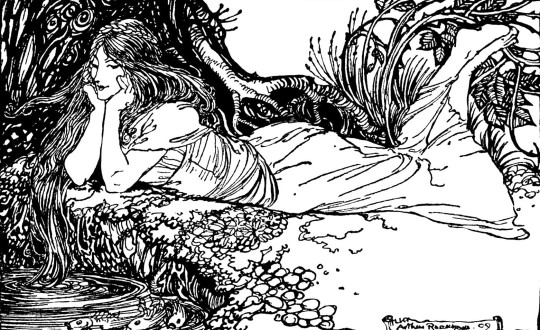
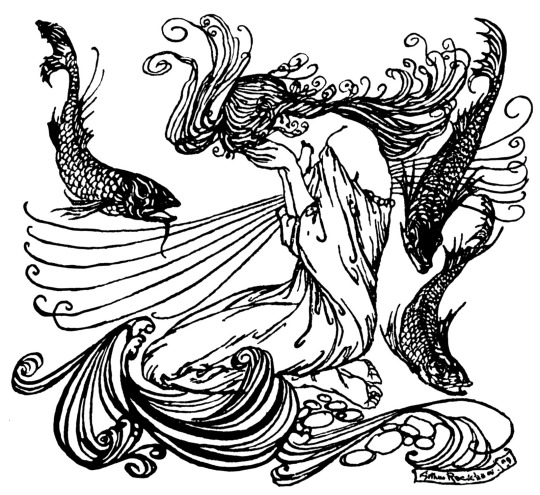
Illustrations from Undine by Arthur Rackham (1909)
#arthur rackham#art#illustration#golden age of illustration#1900s#1900s art#vintage art#vintage illustration#vintage#english artist#british artist#books#book illustration#germanic legends#fairy tale#fairy tales#fairytale art#undine#sea nymph#classic art
2K notes
·
View notes
Text

Hey warum heißt der so
79 notes
·
View notes
Text


#maya and the three#arcane#maya y los tres#chimi the skull archer#rico the rooster wizard#jinx arcane#ekko arcane#timebomb#ekko x jinx#rico x chimi#rico and chimi as timebomb in this scene as a AU#chimi and jinx share the same voice in the German dub#powder jinx#arcane league of legends
40 notes
·
View notes